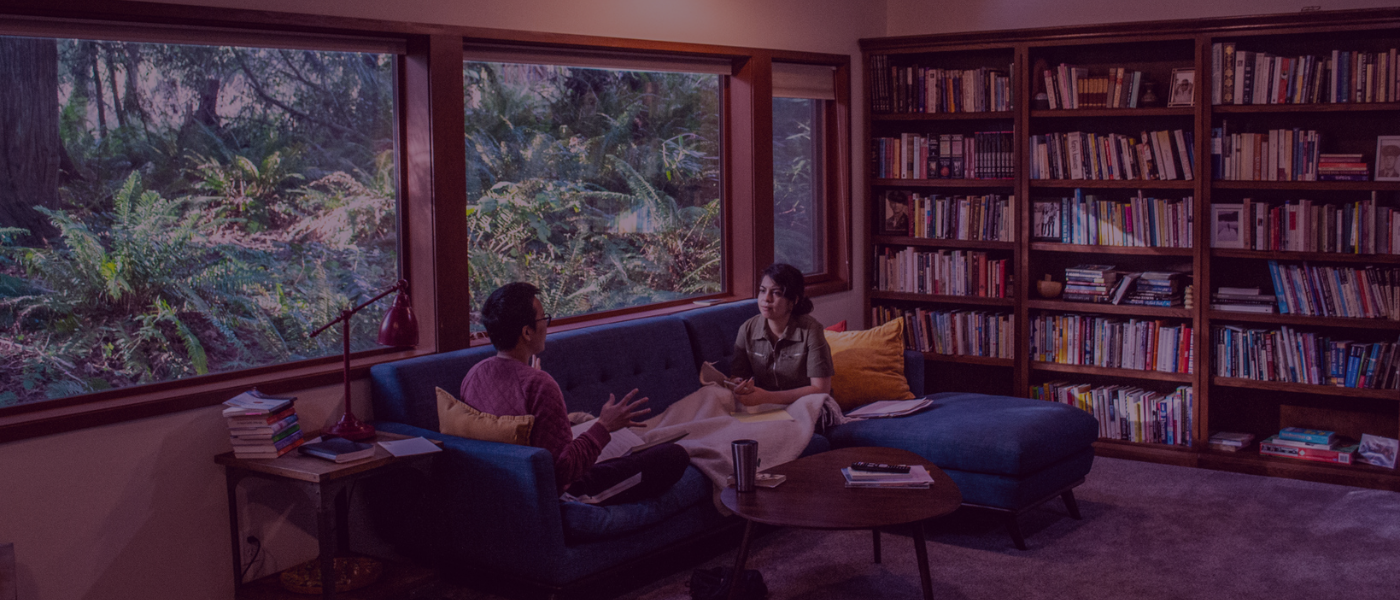A roundup of some wonderful resources to deepen your understanding of craft and process
As every writer and artist knows all too well, honing our craft and developing our creative practices are lifelong endeavors. But, we believe, it doesn’t have to be a lonely one. Whether you are newer to the writing space, or you’ve been penning poems by candlelight for years on your own, there is always something to be gleaned from the wisdom of those who’ve been writing and creating much longer than we have. Because while there is no “right” way to create and exist as a writer in the world, there are inevitably resources out there that can help us better understand what methods are best for us and our particular practices.
At Seventh Wave, we consider ourselves to be perennial students of story and craft. Over the years, we’ve compiled a comprehensive list of books that are great companions for the long journey of discovery, books that are great to read from cover to cover, or that can act as touchpoints for when you need that small dose of inspiration. Below, we’re sharing just seven of the many great books that have deeply impacted the way we understand writing and all of the practices surrounding the act that can make the writing life so very textured and rich.
Meander, Spiral, Explode by Jane Alison
A craft book that expands beyond theory and canon and into the realm of experimentation and play? Yes, please! Jane Alison’s Meander, Spiral, Explode is a fantastic craft book that advocates for alternate ways of approaching story beyond the traditional narrative arcs that we’ve been taught to expect in literature classes. “For centuries there’s been one path through fiction we’re most likely to travel — one we’re actually told to follow — and that’s the dramatic arc: a situation arises, grows tense, reaches a peak, subsides … But something that swells and tautens until climax, then collapses? Bit masculosexual, no?” Alison writes in the introduction to the book. “So many other patterns run through nature, tracing other deep motions in life. Why not draw on them, too?”
In Meander, Spiral, Explode, Alison points to patterns that naturally occur in nature — waves, radial shapes, and spirals, for instance — and offers examples of writers who’ve pushed back against the traditional arc by embracing more experimental forms that unlock new ways of storytelling. Writers of nonlinear prose that she invokes include Anne Carson, Gabriel García Márquez, Jamaica Kincaide, Clarice Lispector, and Caryl Phillips. Great for writers looking to feel inspired or unsure of where or how to begin.
Body Work by Melissa Febos
When it comes to the craft of memoir and personal essay, there are few writers we turn to more often than Melissa Febos. Body Work is part master class, part invitation, part gentle companion and guide. Febos draws upon her own experiences as a writer, a former sex worker, a recovering addict, and a human in the world to champion the art of memoir and what is often dismissed as “navel-gazing.” By writing into our wounds, Febos argues, we are able to create a necessary distance between ourselves and our experiences, and thereby chart a path forward into the heart of the matter in a way that is new and healing. “There is no pain in my life that has not been given value by the alchemy of creative attention,” she writes.
For writers looking to dig into their own personal archives, Body Work offers encouragement and practical craft advice for how to establish a relationship with what we put down on the page. Who are we writing toward when we share our most intimate secrets in published form? Can we be honest about what we are hoping to get from divulging our innermost desires? At its heart, Body Work is an ode to the importance of writing — as salve, as megaphone, as the quickest route into our most honest selves.
The Anti-Racist Writing Workshop by Felicia Rose Chavez
Workshopping our writing is a big part of the creative process, whether it takes place in a graduate level classroom or at a friend’s house with a few fellow writers over large mugs of coffee. Seasoned educator Felicia Rose Chavez’s The Anti-Racist Writing Workshop is a blueprint for how to hold these spaces in a way that honors the work while also moving away from the longheld practices of traditional workshops that have historically harmed writers of color and other marginalized peoples. “Every writing teacher on earth needs this book,” Kiese Laymon, author of the award-winning memoir Heavy, has said. In her book, Chavez combines memoir with teaching strategies, pushing facilitators to think about how we can create a democratic teaching model that prizes fortification and nourishment over critique and grandstanding.
For writers who are in workshops, or who are interested in cultivating such spaces, The Anti-Racist Writing Workshop is a foundational primer for how to build safety into the practice. The book also offers helpful insight into how to provide feedback and read others’ work with generosity so as to cultivate responsible literary citizenship. We are all in it together, Chavez reminds us, so we really need to look out for each other most especially in the vulnerable space of workshops.
Craft in the Real World by Matthew Salesses
Matthew Salesses’ experiences as a seasoned fiction writer and an instructor heavily inform his seminal book on craft. In Craft in the Real World, Salesses points out that the traditional writing workshop was not built for anyone outside of the white male cannon — and that it is high time that we make more room for writers who reflect the changing demographic makeup of the world we live in. Craft examines different elements of writing, including plot, character, conflict, structure, and believability, as well as aspects of the traditional writing workshop model, and asks us to reconsider the ways we have been taught to understand these approaches. Through exercises, concrete examples, and suggestions for building syllabi, Salesses paints a different world, one in which diverse storytelling is not novel, but the norm.
“When we write fiction, we write the world,” Salesses shares, pointing out how interrelated our work on the page is to our work off it. With Craft, he is creating a new understanding of what “universal” really means, encouraging us to think outside the box of what practices have been passed down through the years — and why. A great craft book for anyone thinking of teaching creative writing, as well as anyone who is a student of story, looking for new ways to see your own work and its place in the world.
Bird By Bird by Anne Lamott
If you’ve ever felt the swell of overwhelm as you face down a deadline or a blank page, then Bird by Bird may just be the craft book that can help ease your anxiety. Anne Lamott’s beloved book is conversational and inviting, relating the act of writing to the act of living. In her words, “Good writing is about telling the truth,” which is why she encourages writers to dig deep and get beyond the awkward, terrible, blah first drafts to get closer to the hot orb of truth that defines really good writing. Lamott’s advice is clear and reassuring: worry less about plot and more about the characters. Pay attention to your life, and always take notes. You are your own worst enemy, so learn to become your own best cheerleader.
Bird by Bird gets its title from advice that her father — who was also a writer — gave her brother when he had to write a school report about birds when he was about 10 years old. Stressed out and panicking about the report due the next day, her brother was close to tears when her father put his arm around him and said, simply, “Bird by bird, buddy.” Lamott expands upon this idea in her book, reminding readers to tackle one thing at a time in the long journey toward completion.
Draft. No. 4 by John McPhee
For writers of longform nonfiction, John McPhee is a much-beloved, respected mentor. In Draft No. 4, the esteemed writer shares insights into the writing process through a series of playful, incisive essays that tackle everything from how to structure a narrative to how to get sources to tell you information they might otherwise keep close to the chest. “Readers are not supposed to notice the structure,” he writes of the former. “It is meant to be about as visible as someone’s bones.” One particular essay, about how to tackle “writer’s block,” invokes the practice of letter writing as a way to get outside our own neuroses and just tell the story straight.
McPhee’s essays are full of personal anecdotes and even diagrams, detailing his long career as a writer, his time as a professor at Princeton University, and even his early years at Time magazine. Any writer who is looking to better understand the inner psyche of a writer’s process will appreciate Draft No. 4. Great for doses of inspiration and a companion along any arduous creative journey, the collection is a reminder of why writing, despite its many pain points and complexities, makes us fuller humans in the end.
The Art Of Series published by Graywolf Press
For writers who have a more specific element of writing or craft that they’re curious about, Graywolf Press’s The Art Of series offers priceless advice and wisdom from seasoned practitioners. Titles include things like The Art of Time in Memoir, The Art of Syntax, and The Art of Subtext: Beyond Plot, with renowned authors like Carl Phillips, Peter Ho Davies, and Joan Silber at the helm of each edition. There are 15 volumes in total, each a relatively slim book perfect for a refresher during a writing day or session. Most volumes are genre-specific, but there are also topics like The Art of History: Unlocking the Past in Fiction and Nonfiction that serve as bridges amongst and between genre and form.



